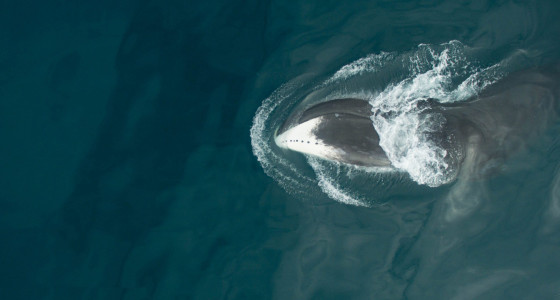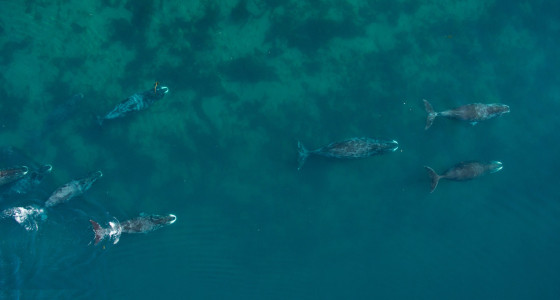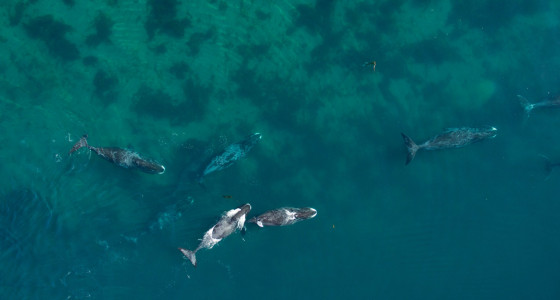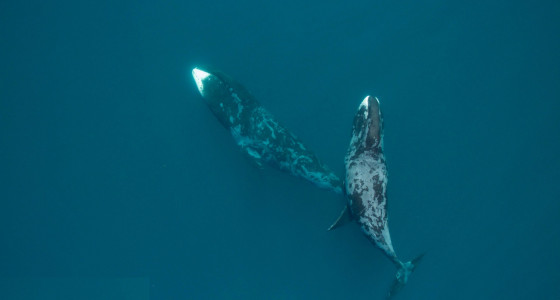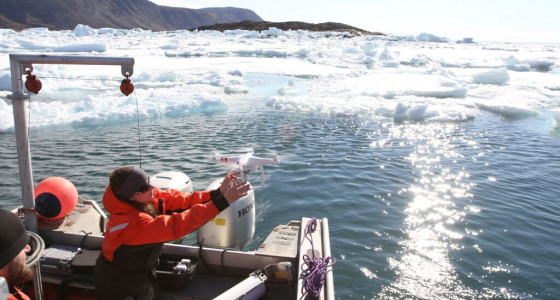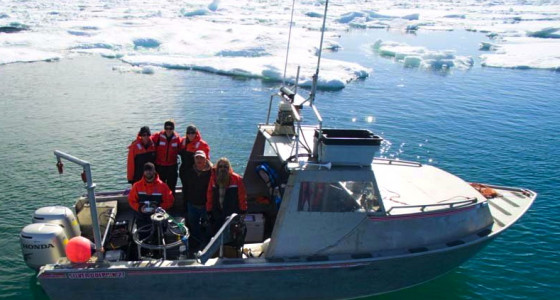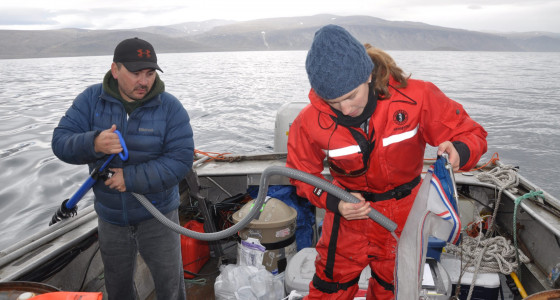Over the course of a four-year-long study in Cumberland Sound, Nunavut, researchers from the Institute for the Oceans and Fisheries (IOF) at the University of British Columbia, Woods Hole Oceanographic Institution, and Fisheries and Oceans Canada discovered that bowhead whales have more flexible feeding behaviours than previously expected.
The researchers tracked the whales using tags that recorded the time the whales spent underwater and the depths to which they dove. They compared this information with another dataset they collected which covered the distribution, abundance and composition of bowhead prey species at different water depths. Their goal was to get a clearer picture of bowhead feeding behaviour.
As they collected this data in a remote corner of Nunavut with unpredictable weather, the team was tested with a series of challenges. “As prepared as you are and as keen as you are to get out, if you have bad ice conditions then it’s impossible,” said Sarah Fortune, the study’s lead investigator and guest researcher at the IOF. “We ran a two-vessel operation. Normally with this type of project you’d have a large oceanographic vessel with all of your equipment onboard and you’d live on the boat… but we were working with smaller boats. Every day we were in the field we’d have to haul our equipment off the boat, which was a huge oceanographic cage with all these instruments mounted in it.”
Fortune attributes the project’s success to a close collaboration with the local Inuit people of the region.
“They had quite a bit of experience working on the water with bowheads and knowing the places to look, the times to look, and they were able to read the whales really well,” she said.
What surprised the researchers most was that the bowheads had a distinctive feeding pattern, moving between different “prey layers” (the water depths where different prey species reside), instead of consistently feeding in the same locations. The whales tended to seek out more energy-rich zooplankton located at greater depths. However, they alternated between deep dives and shallow dives, occasionally forgoing the larger zooplankton deeper underwater to feed on the less energy-dense species closer to the water’s surface.
“It may be that the whales are doing a cost-benefit analysis between the energy you would expend to dive deeper for longer vs. feeding on those lower-hanging fruit that are much more accessible,” Fortune said.
The researchers were also able to compare whale activity in two Cumberland Sound fiords that are nearby each other. Bowheads spent most of their time Kingnait Fiord, but rarely travelled to the adjacent Pangnirtung Fiord. The researchers speculated that the preference comes down to Kingnait having an energy rich and deep layer of large-bodied Arctic zooplankton.
“This study contributes two things,” said Andrew Trites, an IOF professor who contributed to the project as Fortune’s PhD co-supervisor. “One, it provides some important baseline information that can be used to interpret future changes that may occur in whale distributions, numbers and behaviours. The second is it also helps us to understand what bowhead whales need to survive.”
Understanding the needs of bowheads is a crucial first step taken to learn how they will respond to climate change.
Fortune says that the study also provides further evidence of the vast differences between human and animal awareness. “I feel as though with all of these foraging ecology studies what we routinely see is that these animals are far superior than we could ever be at detecting prey and at detecting large biomasses of prey,” Fortune said.
Tags:
